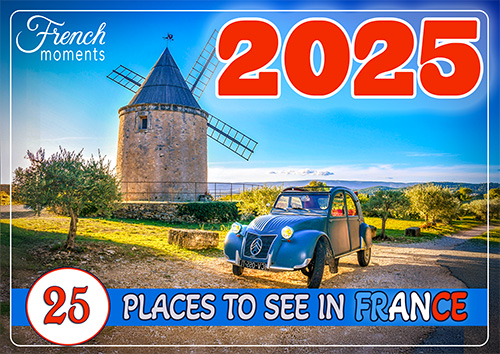Castel Béranger is one of Paris’ most extravagant buildings, built in the Art Nouveau style by Hector Guimard.
This residential building is situated in the 16th arrondissement, not far from the Maison de la Radio.
The building of Castel Béranger
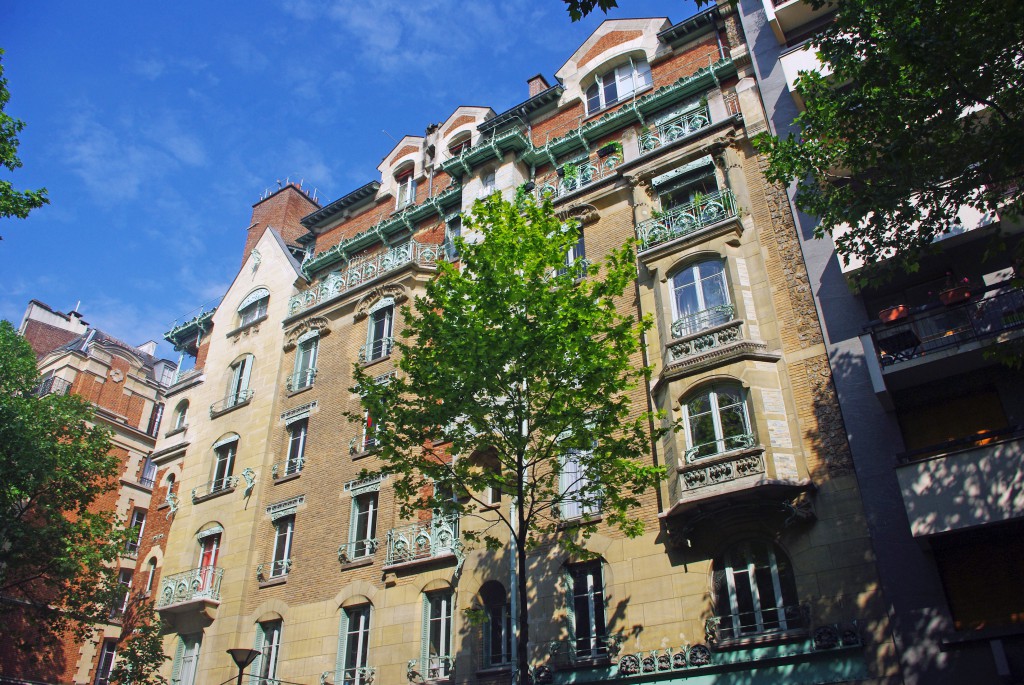
Castel Béranger was designed between 1895 and 1897 by architect Hector Guimard (1867-1942) for his client, Anne-Elisabeth Fournier.
The famous Art Nouveau architect had to persuade his client to design her house with an overt embracement of the art of the curvilinear.
As a reminder, the Art Nouveau style was inspired by natural forms and structures, including the curving stems of plants and flowers.
The building initially consisted of 36 apartments, each different from the next and covering 60m2.
Guimard had a lift installed, a rather new feature in Paris.
What makes Castel Béranger different from Haussmannian blocks?
Castle Béranger was Guimard’s first solo project and crucial transitional work.
For the young and then-unknown architect, Castel Béranger was the first residential block in Paris to be built in the Art Nouveau style.
An inscription on the façade reveals that the building won the coveted prize for Paris’ most beautiful façade in a contest held in 1898 by the City of Paris.
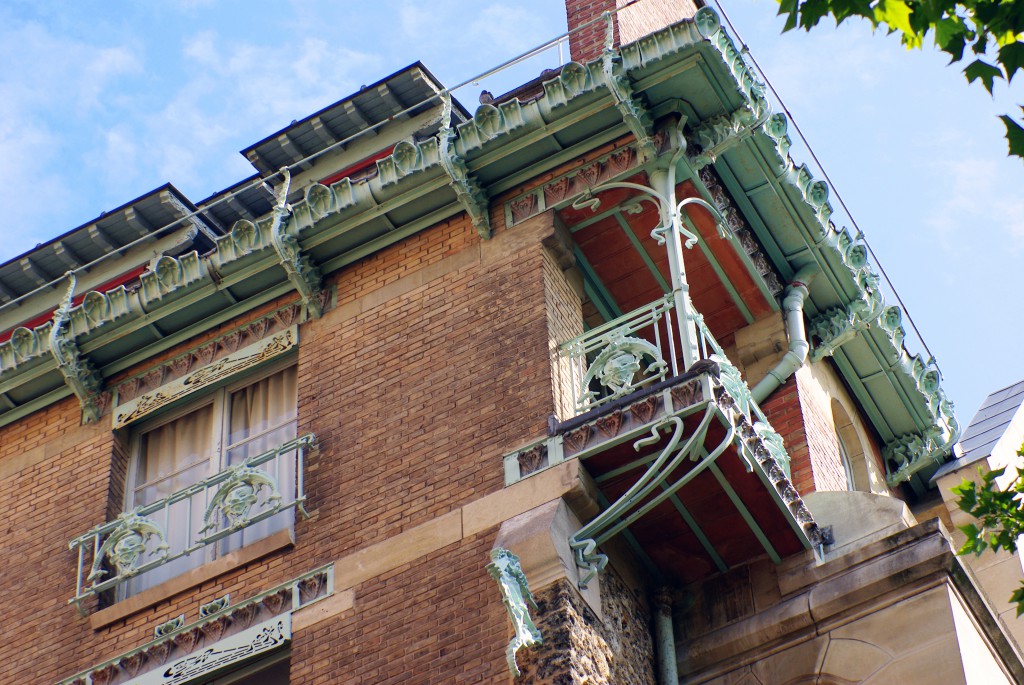
Guimard benefited from the changes in established building codes at the end of the 19th century.
For instance, the law of 1884 allowed larger projecting elements on façades: bow windows and corner domes.
The Art Nouveau style thrived in the wealthy districts of Paris with a new flowering ornamental sculpture.
Far from the monotonous Haussmann style, Guimard used pierre de taille, red, grey and glazed bricks, millstones, cast iron, molten copper, wood and polychrome stained glass.
Guimard’s use of cast iron aroused astonishment as the material was then exclusively used in stations and factories.
Consequently, Castel Béranger was nicknamed “Castel dérangé” (crazy Castel) by his detractors.
A closer look at the residence
Many elements of the building refer to the Gothic style such as the overhanging turrets on the corners and the name ‘castel’ (castle) instead of ‘hotel’ (townhouse).
Have a closer look at the balconies.
The ornamental ironwork displays fantastic shapes typical of the Art Nouveau style.
Moreover, the awkward Castel Béranger was also known as the ‘house of devils’.
Indeed, the balconies bear devils and masks. Legend has it that they caused the old ladies of the neighbourhood to make the sign of the cross when they passed by.
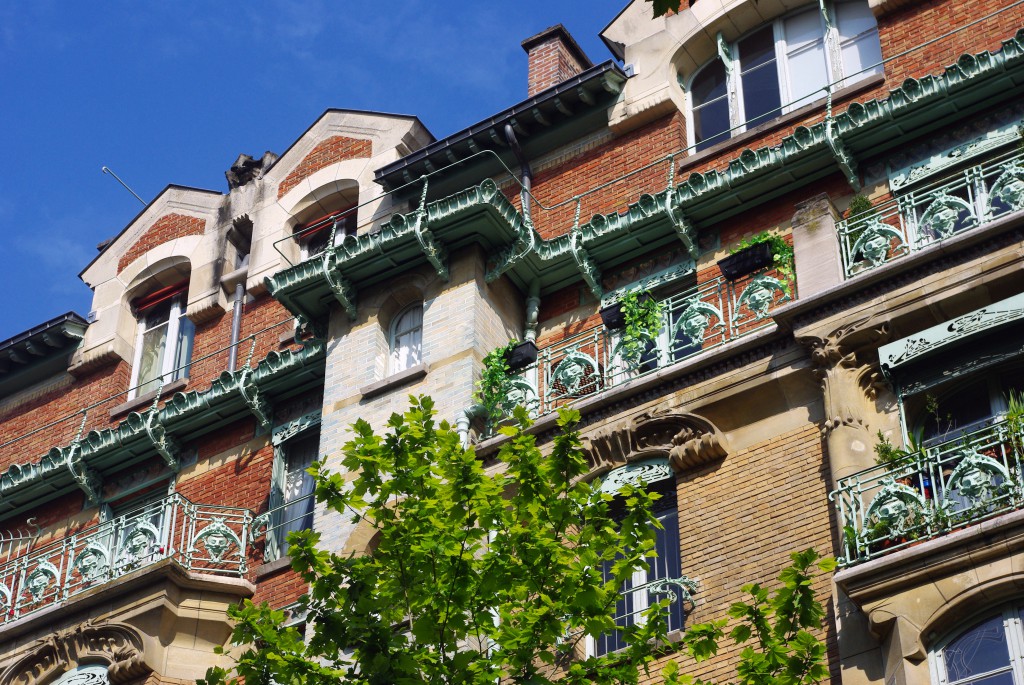
Two columns flank the graceful wrought-iron gateway.
The architect was very pleased with its design.
The door was kept secret and put into place until the very last moment!
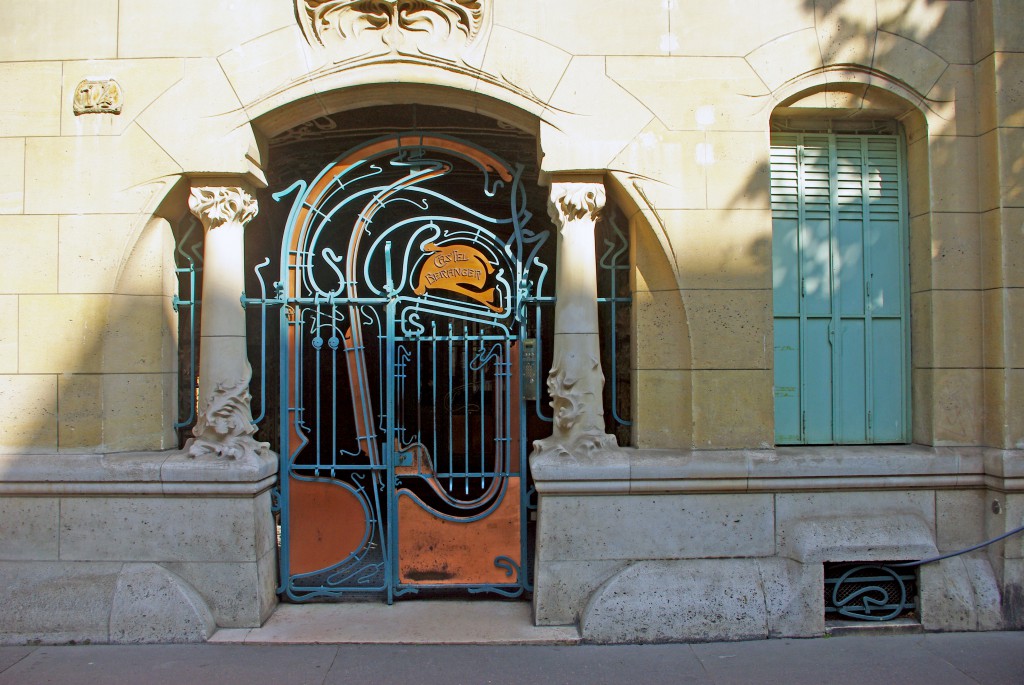
Have a peek through the railings at the richly decorated entrance hallway.
It is decorated with glazed sandstone in green tones, which blend perfectly with the floral motifs.
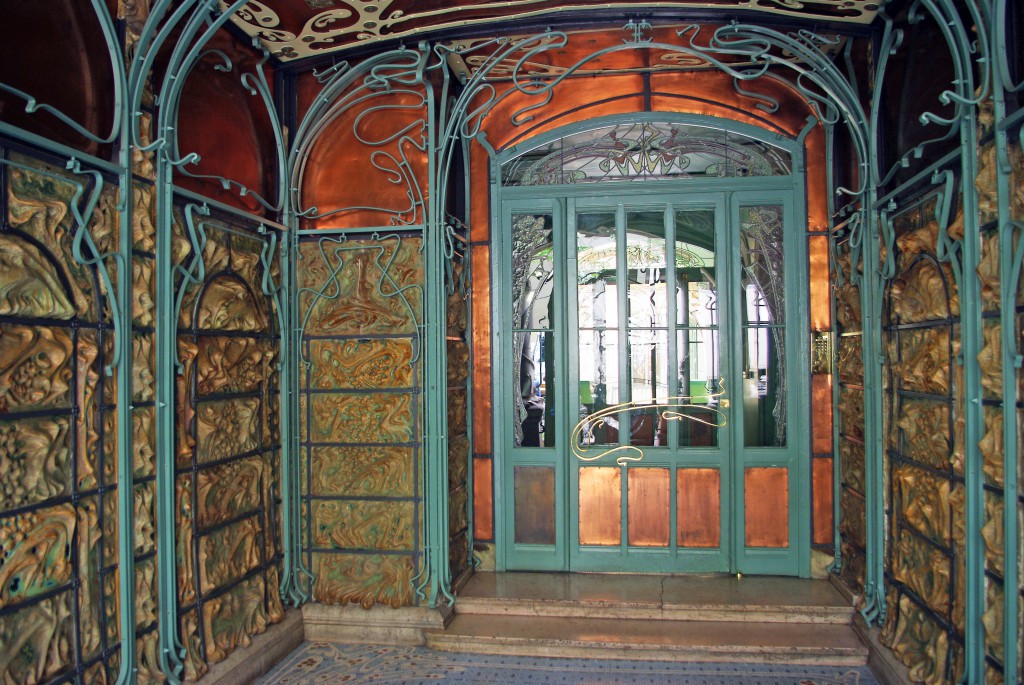
The Castel Béranger was listed as a historical monument in 1972.
Our advice: the best time of the year to admire the building is to come on a clear day in Winter. Trees won’t hide part of the façade.
More photos of the Art Nouveau building
Here is a selection of photos I took on my last visit to Castel Béranger:
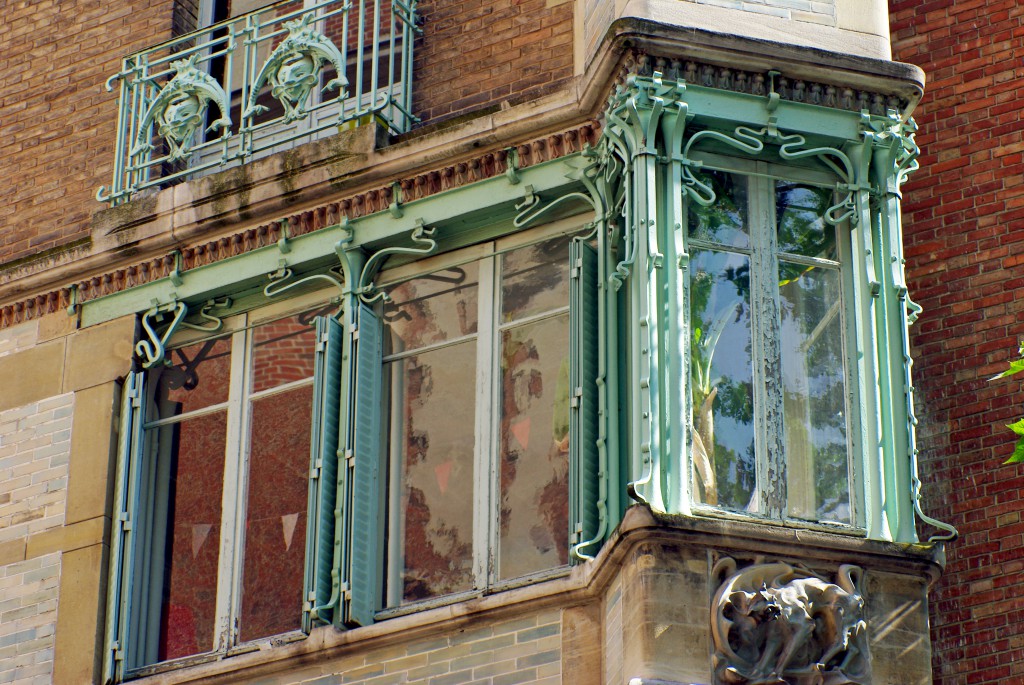
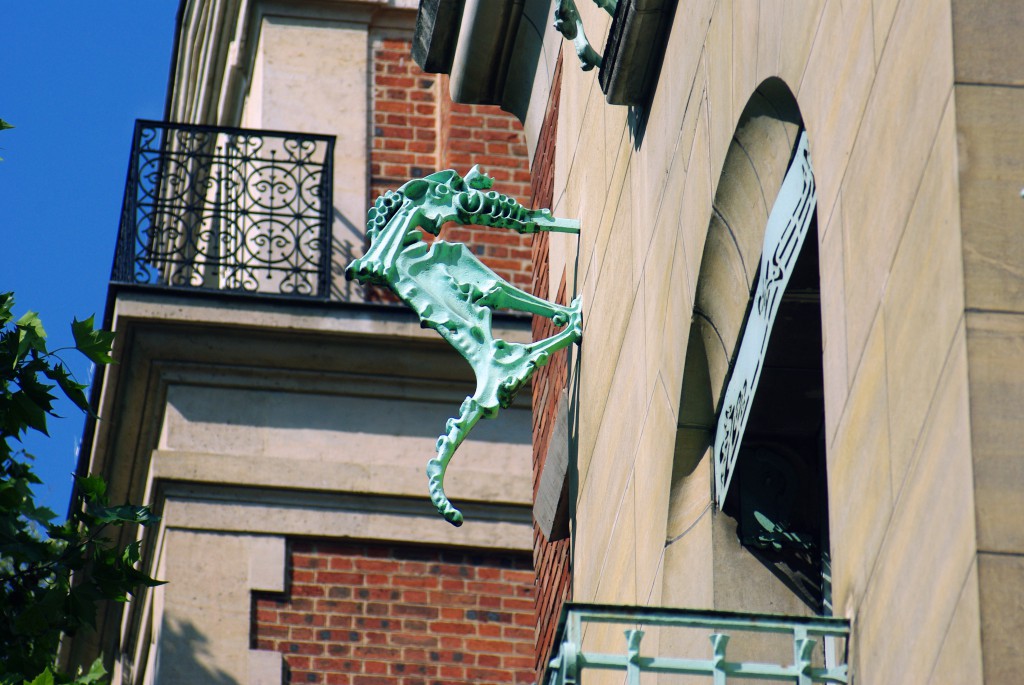
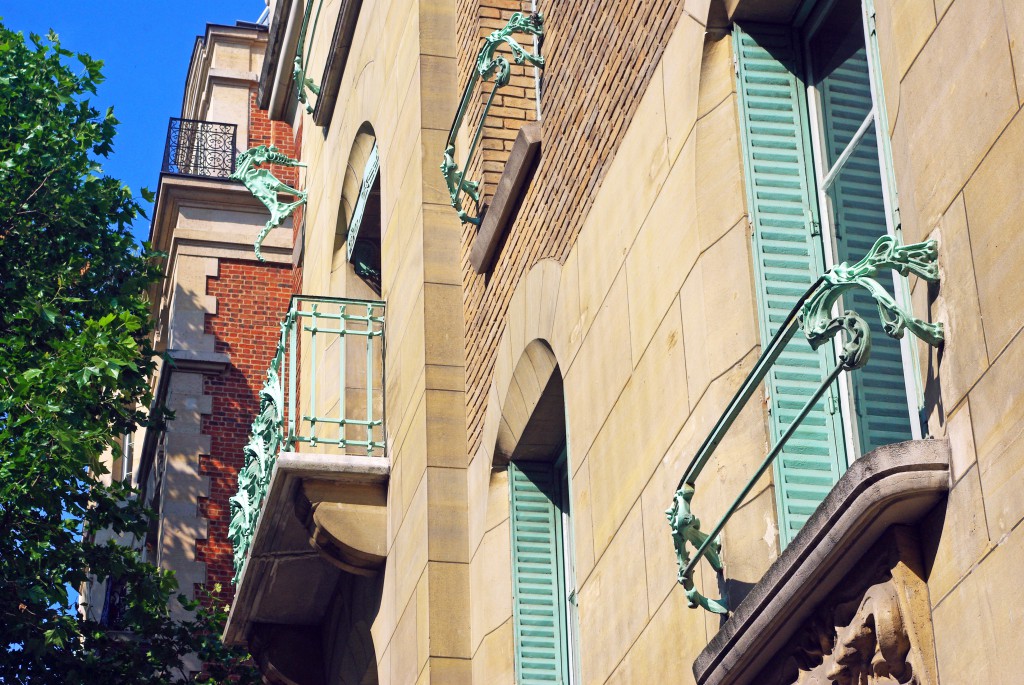
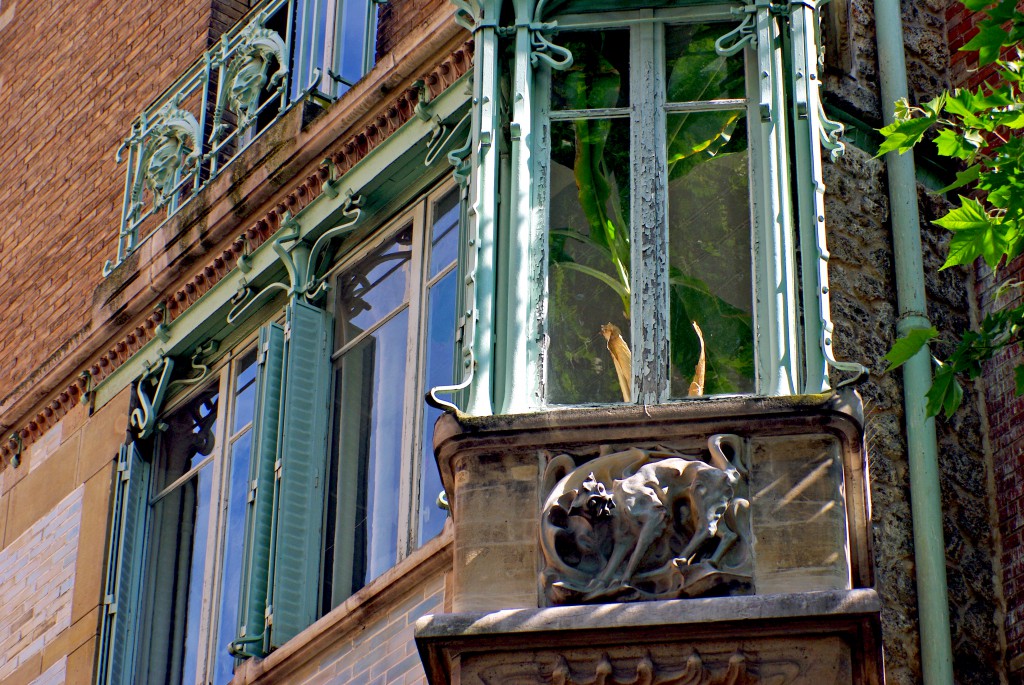
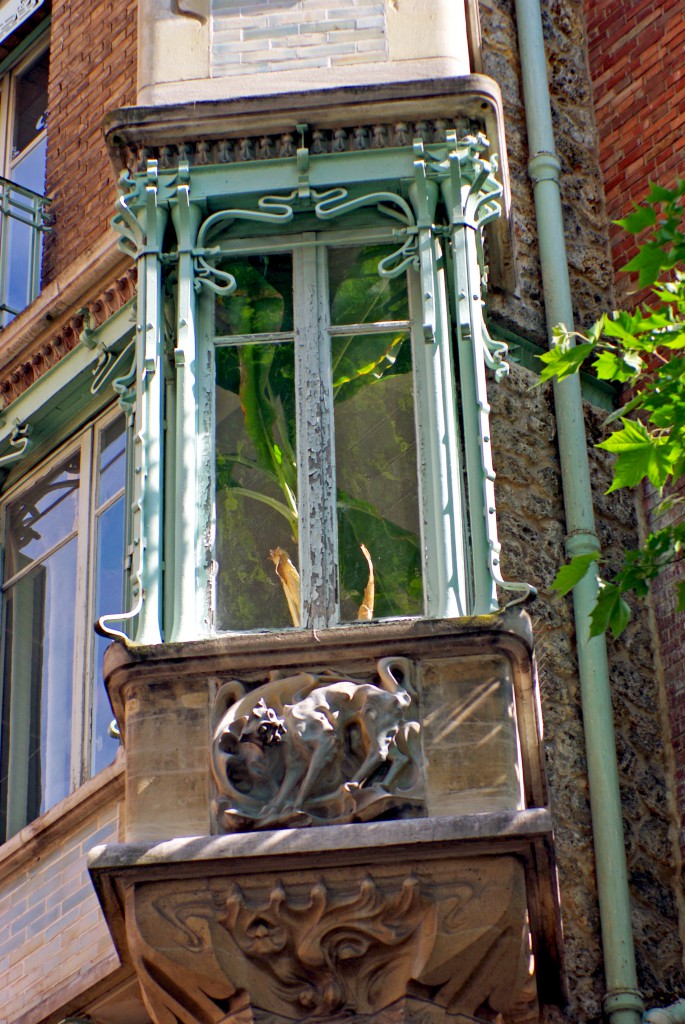
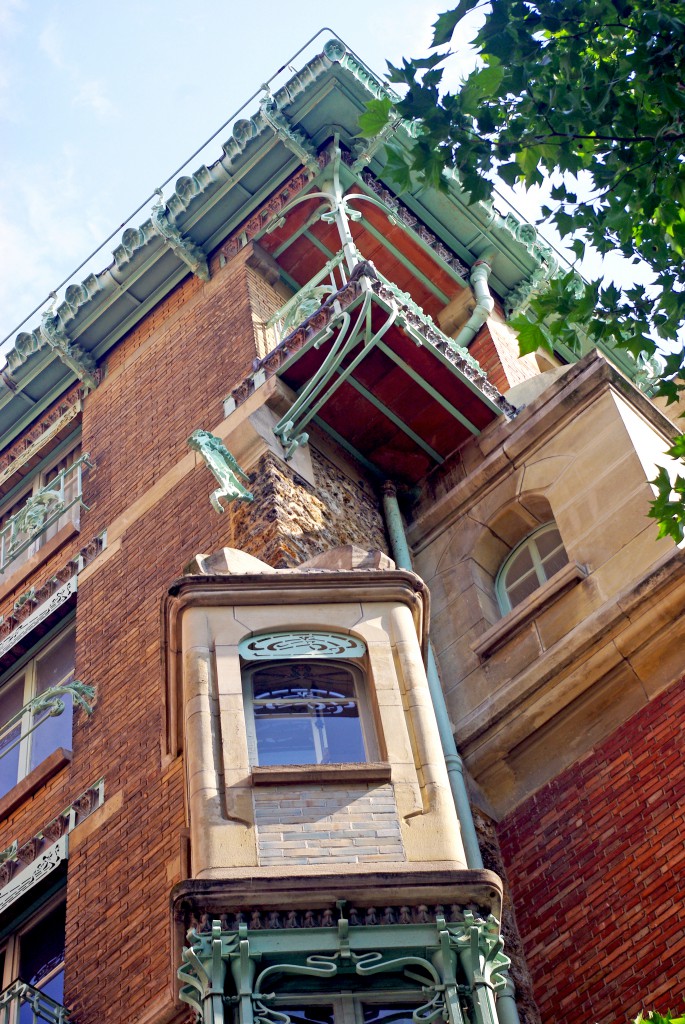
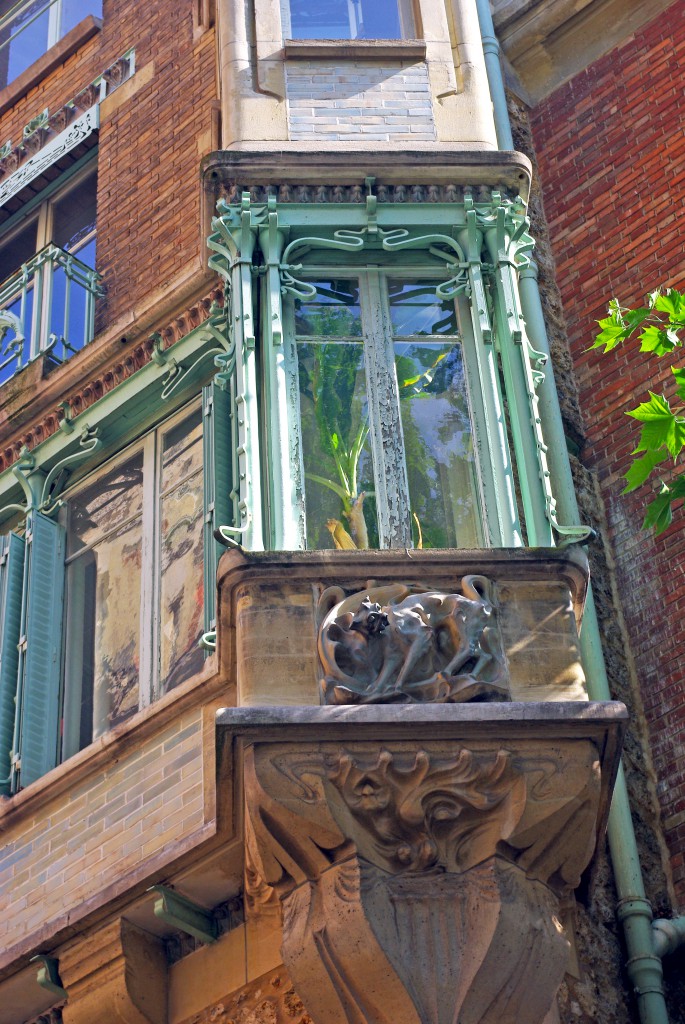
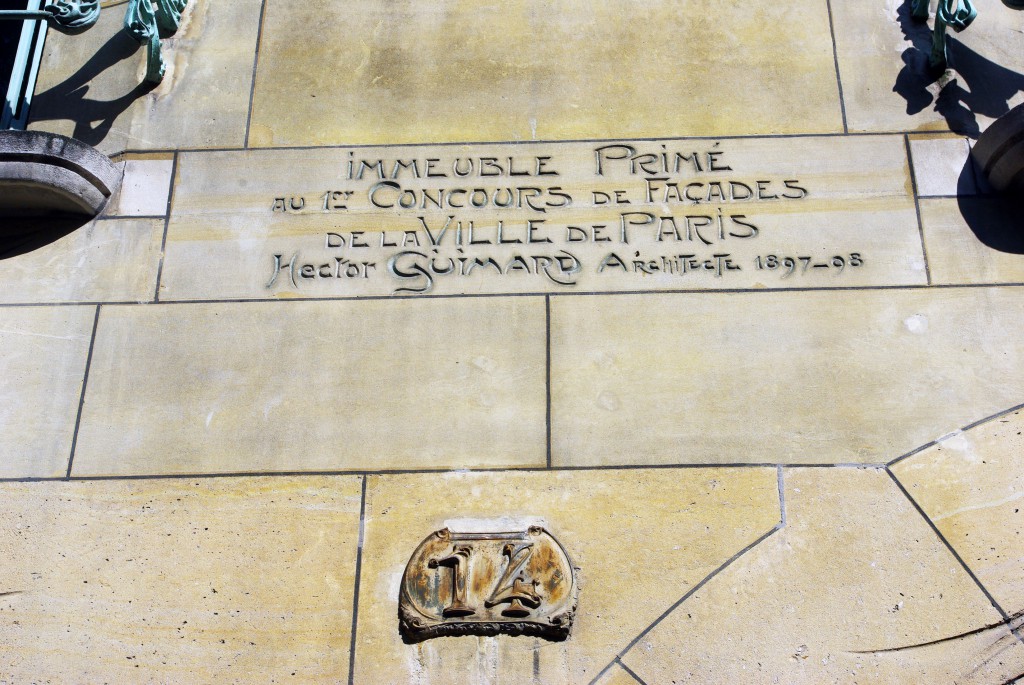
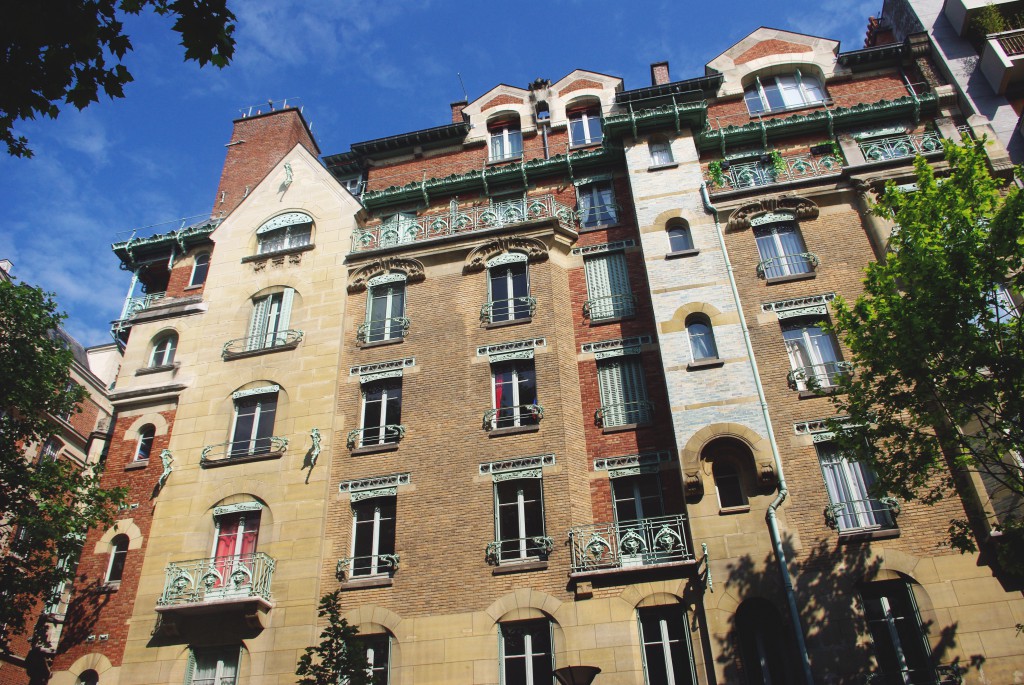
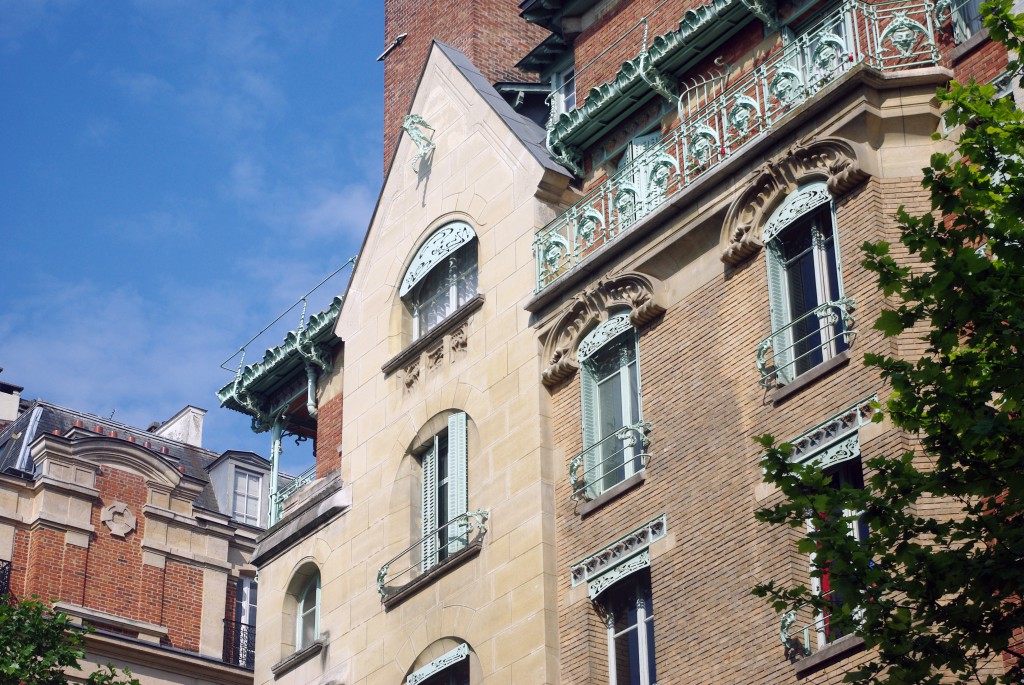
Art Nouveau by Guimard and Co.
There are other Art Nouveau buildings in the area.
These include the Hôtel Mezzara at 60 Rue de la Fontaine and seven other buildings in Rue de la Fontaine, Rue Gros and Rue Agar.
There is much other work of Guimard found in Paris. Two of them are the métro entrances of the Porte Dauphine station and Place des Abbesses.
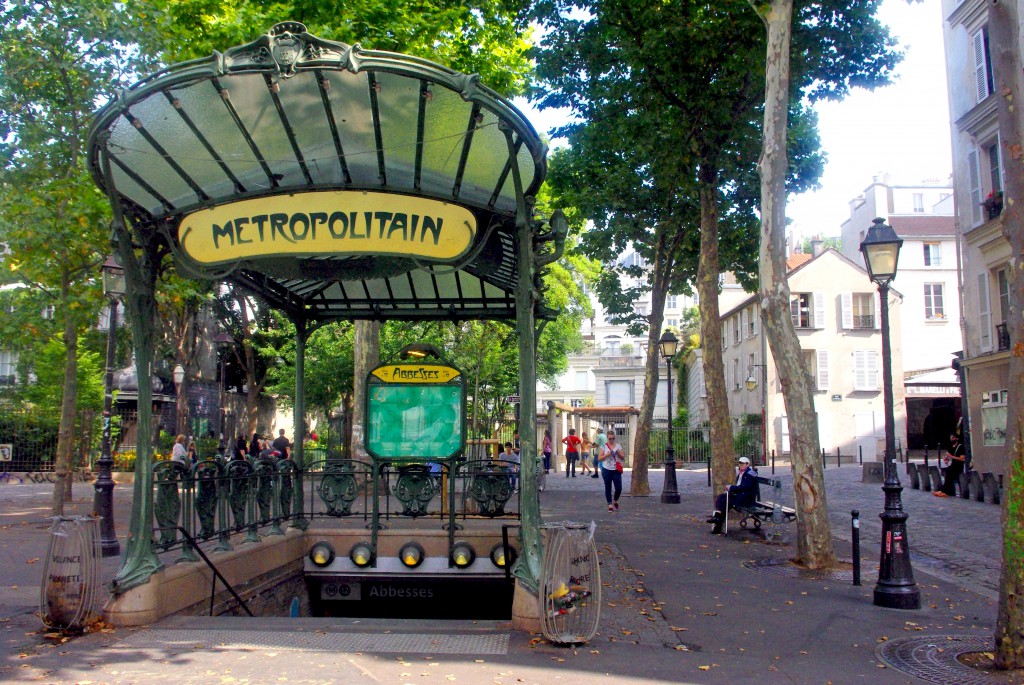
If you are interested in the Art Nouveau style, check out our article about Art Nouveau in Nancy.
How to get to the Castel Béranger?
- Castel Béranger is located at 14 rue de la Fontaine in the 16th arrondissement. Click on this link to open a google map => Castel Béranger, Paris.
- Avenue du Président Kennedy-Maison de Radio-France (RER C) is the closest station.
- You will have to walk from the métro stations Ranelagh (line 9), Église d’Auteuil (line 10 to the direction of Boulogne-Pont de Saint-Cloud) or Mirabeau (line 10 to the direction of Gare d’Austerlitz).
Did you like this article? Then please share it on Facebook, X or Flipboard! 🙂



